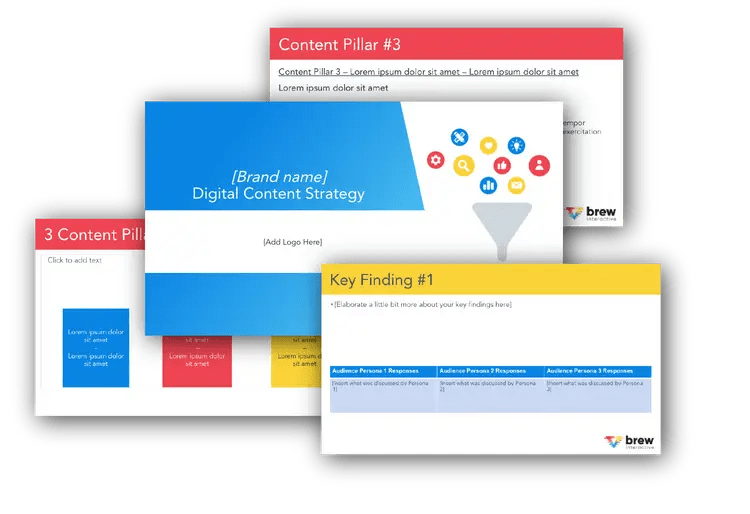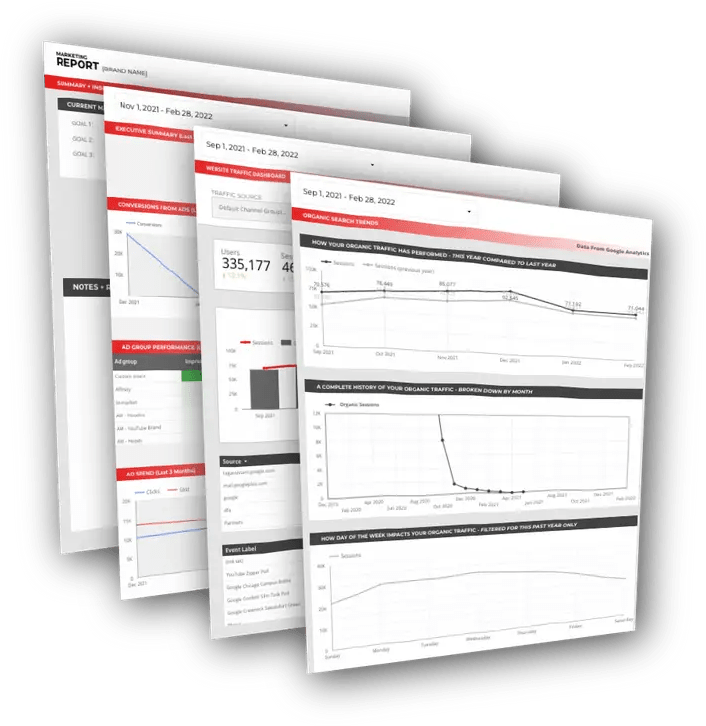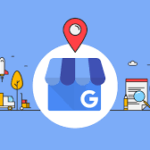Companies who use CRMs effectively see an ROI of $8.71 for every $1 spent.
But CRM implementation projects fail more than 50% of the time.
Companies love the idea of using a CRM, but more than half fail to use them correctly, resulting in wasted time and lost money.
In this guide we’re going to walk you through how you can see an 800% ROI from your own CRM strategy:
- The importance of a sound CRM strategy
- The 6 reasons why more than 50% of CRM implementations fail
- The 8 steps to a successful CRM implementation
Why Do You Need a CRM Strategy?
Successful CRM implementation coupled with an ongoing CRM strategy help B2B companies:
- Close deals at a high rate. 82% of top salespeople cite CRM tools as “critical” to their ability to close deals.
- Retain and satisfy customers. 47% of CRM users said that their CRM had a significant impact on customer retention and customer satisfaction.
- Save time and improve productivity. CRM apps can increase sales productivity by up to 34%.
Despite the obvious benefits, CRM projects fail between 50% – 75% of the time.
CRM implementation can be tricky.
Why Do Most CRM Implementations Fail?
There are six primary reasons CRM implementations fail:
- Lack of coordination across teams
- No CRM business strategy
- Lack of process change
- Lack of executive support
- Poor business representation
- Inappropriate IT investments
The majority of these issues can be avoided with a sound CRM implementation plan.
Pay close attention to these eight steps and roll out a B2B CRM strategy that works.
How to Implement a CRM Strategy for B2B?
1. Understand Your Sales Process + Lead Flow
Many sales and marketing professionals believe a CRM can just be “turned on” and they’ll see results. They believe CRM software is just plug-and-play.
But anyone who has spent time in sales and marketing knows that software alone can’t solve our problems.
Our CRM software will only take us as far as our sales process, sales strategy, and lead flow will allow.
You’ve got to answer some very important questions before diving into a CRM software:
- What are your goals and KPI’s for your CRM?
- Is your sales process well documented?
- What is your plan for lead flow? How do leads move through your funnel?
- What are the stages in your sales pipeline?
- Who owns which leads and accounts?
- What customer fields and properties do you currently keep track of?
You need to be crystal clear about your sales process before attempting to dive into a CRM implementation.
And – this is very important – your whole team needs to be on the same page before engaging a CRM software. A few weeks into the implementation is not the time to have these conversations. Have them before you get started.
2. Map Out Your CRM Implementation Plan
During this step you’ll be breaking down your CRM project into manageable steps with associated timelines. You don’t want to wind up being this guy.
Here are a few key roles to assign before getting started with your plan:
- Make sure you have top management buy-in. Top management drives opinions and culture, so it’s crucial they’re on board.
- Appoint a project manager. They will make sure deadlines are met and goals are achieved.
- Assign someone as a super-user. This person will be responsible for all things CRM. They will be the go-to for any problems or questions during or after implementation.
Once you have these three key players on board, have your project manager draft a timeline for the below steps, set deadlines, and assign tasks to team members.
If all of this sounds overwhelming, you may benefit from expert help. Find yourself a Salesforce partner agency or HubSpot integrations partner.
3. Define CRM Settings & Customizations
A very important part of CRM implementation is defining your CRM settings and customizations before getting started with data migration.
Salesforce and HubSpot sales have a range of settings you need to consider and suit your team’s needs:
- Company profile
- Custom fields or properties
- User permissions and management
- Mailing policy and consent list
- Deal stages or sales pipeline (more on this below)
- Admin settings
Custom property setup in HubSpot
4. Clean and Migrate Data
It’s time to move your data and populate your CRM. This might be the most important step in any CRM implementation. For most CRMs, you’ll have three or four categories of data to migrate:
- Contacts
- Accounts
- Deals
- Custom Fields / Properties
The first step is to clean your data
This is an all-hands-on-deck task. Whether your current customer data lives in a database, spreadsheets, or in another CRM, we’d recommend having every team member comb through their contacts to make sure all data is accurate and relevant.
Accurate data needs to be updated and irrelevant data (old contacts, unused fields / properties, etc…) needs to be removed. Dirty data can be a waste of time – not to mention confusing for your sales team.
Next, backup your data
Just in case something goes wrong or you decide you hate the CRM within a few weeks, you need a fallback plan. Back up all your data before moving it.
Then, migrate your data
There are lots of ways to move your data. Some CRMs will actually handle the migration for you – some free of charge while others will cost. If that’s not the case, most CRMs allow for fairly simple .csv imports.
Salesforce Data Import + Mapping
Since there’s no reason to move everything all at once, consider moving data in batches to identify any unforeseen issues in your migration.
5. Connect with Other Sales Tools and Apps
Some CRM platforms have plenty of tools and add-ons. HubSpot, for example, has sales, marketing, service, and CMS platforms. If you wanted, you could use their full suite of software for your sales and marketing. Or you could create a custom CRM solution that integrates with everything you need it to.
Other CRM platforms offer much less, meaning you likely need to connect and integrate your other sales tools to ensure all of your software is communicating.
Popular integrations include:
- Email apps (like Mailchimp)
- Lead generation tools (like Unbounce or Lead Pages)
- Project management tools (like Asana or Monday)
- Messaging and communication platforms (like Slack or Teams)
- Social media management (like Buffer or HootSuite)
- Live chat (like Drift)
- Help desk apps (like Zendesk)
- Marketing automation programs (like ActiveCampaign or Drip)
- Analytics platforms (like Google Analytics)
- Accounting software (like Quickbooks)
Some CRM platforms, like Salesforce, have app marketplaces where developers can create integrations for all users.
If your CRM doesn’t have an app marketplace or first-party integrations, you can develop your own or utilize something like PieSync or Zapier to create your own syncs.
6. Configure Your Sales Pipeline
One of the most important pieces of a CRM implementation is your sales pipeline. Your sales pipeline is very similar to your sales funnel. The key difference is that a sales funnel refers to the general buyer’s journey, whereas a sales pipeline refers to the specific stages of your sales process.
Some CRMs refer to this aspect as your “deal stages.” Your Salesforce sales pipeline is built using “opportunity stages.”
As mentioned, if you use HubSpot, you’ll be working with deal stages.
Some tips for setting up your sales pipeline:
- Be sure to customize your pipeline so that it works for your company’s sales process
- Adjust your close probability percentages over time to make your forecasts more accurate
- Make sure your sales team uses the pipeline habitually
- Set up the necessary custom fields you need for your deals / opportunities
7. Set up Helpful Automations
Most top CRMs have plenty of potential to automate aspects of your sales process to help you run more efficiently and effectively.
Setting up sales and marketing automations is a crucial step to getting the most out of your CRM.

Free B2B Content Strategy Template
Not sure where to start when it comes to your content strategy? Struggling to gain traction? Grab our free B2B content strategy template to help you document your strategy.
- Automate email follow ups. You can automate (while still personalizing) email follow-ups and lead check-ins.
- Automatically log customer interactions. Most CRMs have integrations with your email client so you can automatically log all emails.
- Automatically assign leads to sales members. You can set criteria for certain sales people to receive certain leads based on attributes.
- Automatically segment contacts to email lists. If you connect your marketing with your CRM, you can automate assigning them to different email lists.
- Create follow-up reminders. Need a reminder to follow-up with a lead after so many days? Create automatic reminders so you don’t have to make your own task or let sticky notes rule your life.
Automate lead assignments with Salesforce
8. Document Usage Policies and Train Your Team
A CRM isn’t going to improve your organization if your team isn’t using it to its full potential. Lack of process change is why 45% of CRM implementations fail.
Avoid this failure by documenting usage policies and adequately training your team on how to best use your new CRM.
Here are some processes that might benefit from detailed documentation:
- How to add new companies, contacts, and deals
- How to name files, emails, and automations
- How to add new users to the CRM and what permissions different roles in the company should have
- How to log notes after a sales call or meeting
Once everything is documented well, it’s time to train.
This is huge, because don’t forget, nearly 50% of CRM implementations fail due to lack of cross-department collaboration or due to lack of process.
Here’s a suggested road map:
- Document any and all necessary processes. Place these in either a digital folder (or physical book if you’re old school).
- If you’re a larger company, designate one person from each department to be the department’s CRM super user.
- Hold a meeting with your project manager, super user, and each department’s super user to outline the gameplan for training.
- Have all employees log into the CRM to look around, read their processes, and come up with questions.
- Then, either gather the whole company for training (if you have less than 20 or so employees) or gather each department separately.
- Go through the most common use cases, walk through processes, and answer questions.
- Give the company a week or so to explore, run into roadblocks, and generate more questions.
- Collect feedback, make changes to the configuration, update processes, and then communicate all changes.
- Start using your CRM!
9. Measure, Audit, and Improve Over Time
Once your CRM is set up, it’s time to measure adoption and focus on improvement over time.
Most CRMs have usage data such as logins, data stored, and reports accessed.
Salesforce’s AppExchange has a free dashboard to help you measure adoption:
If you’re a smaller company, you may not need this kind of data. It’s probably clear who is using and not using your new CRM.
But if you’re a larger company, pull data to help you determine how adoption is going. You can track metrics like:
- Total number of user logins
- Contacts added
- Deals or opportunities created
- Reports pulled, downloaded, or accessed
- Calls and notes logged
As the CRM is getting used more often, it’s natural that roadblocks and issues will arise. Lean on your project manager to collect this information and your dedicated super user to address it.
Execute sales audits regularly and focus on improving your CRM and its surrounding processes regularly.
CRM Strategy for B2B Success
CRM implementation doesn’t stop with the initial roll out. Your B2B CRM strategy should be constantly evolving as your business grows and changes.
Follow the above steps, but above all, ensure your CRM strategy and processes work for your company. Revisit your goals and KPIs to ensure it’s effective.
And above all, don’t forget that software can’t fix your company. Your strategy is just as important as your CRM platform.

Free DataStudio Marketing Report
Improve your marketing reporting with our free DataStudio template that pulls data from Analytics, Google Ads, and Search Console to get a 360 degree view of your digital performance.





